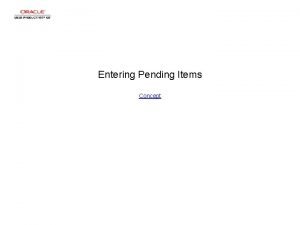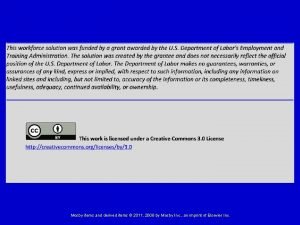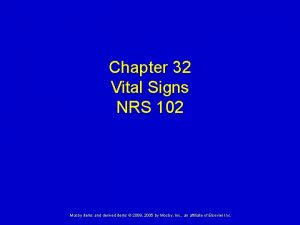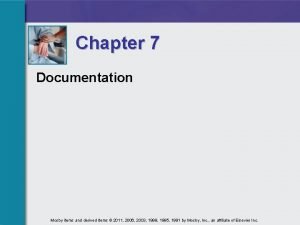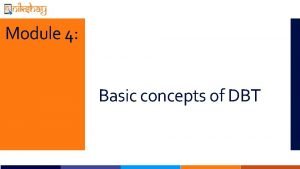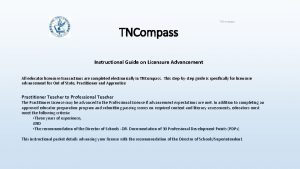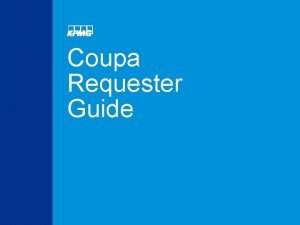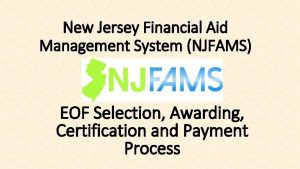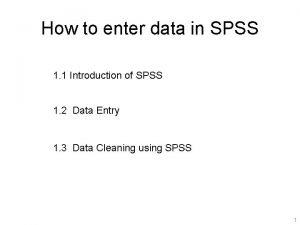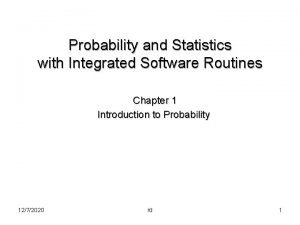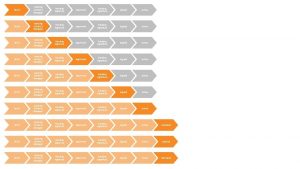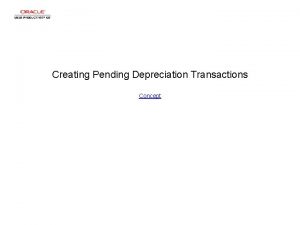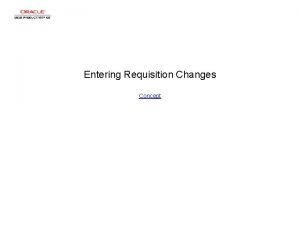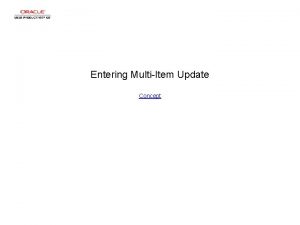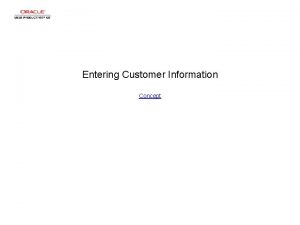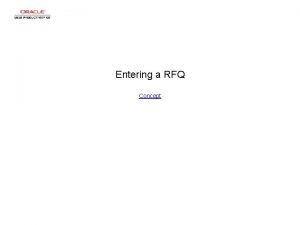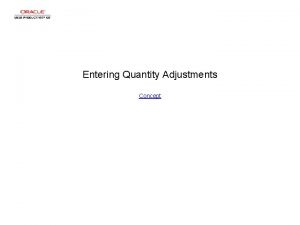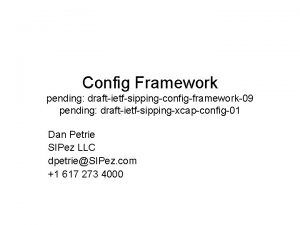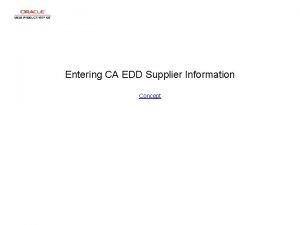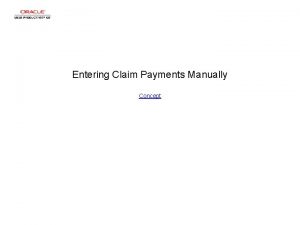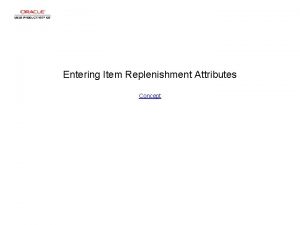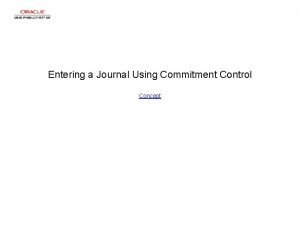Entering Pending Items Concept Entering Pending Items Entering


























































- Slides: 58

Entering Pending Items Concept

Entering Pending Items

Entering Pending Items Step 1 Begin by navigating to the Group Control page. Click the Scroll Down arrow.

Entering Pending Items Step 2 Click the Accounts Receivable menu.

Entering Pending Items Step 3 Click the Pending Items menu.

Entering Pending Items Step 4 Click the Online Items menu.

Entering Pending Items Step 5 Click the Group Entry menu.

Entering Pending Items Step 6 Click the Add a New Value tab.

Entering Pending Items Step 7 Click the Add button.

Entering Pending Items Step 8 Use the Group Control page to record the group type, origin ID, currency, and control totals for the pending item group. You can also view the status and posting action selected for the pending items group and the balance status of the existing accounting entries.

Entering Pending Items Step 9 The Accounting Date field displays the accounting date that is the default for each pending item in the group. The date determines the fiscal year and accounting period to which the pending item is posted.

Entering Pending Items Step 10 Use the Group Type field to specify the group type defined for billing. Click in the Group Type field.

Entering Pending Items Step 11 Enter the desired information into the Group Type field. Enter "B".

Entering Pending Items Step 12 In the Origin ID field, enter the group origin ID, for example OBILL (online billing). The system assigns an origin ID that is valid for external entry to groups that are received through the billing interface. Click in the Origin ID field.

Entering Pending Items Step 13 In this example, you are entering the pending items group online. As a result, the origin of the group is online billing. Enter the desired information into the Origin ID field. Enter "OBILL".

Entering Pending Items Step 14 In the Control Currency field, enter a currency only if you want all pending items in the group to have the same currency. Click in the Control field.

Entering Pending Items Step 15 Enter the desired information into the Control field. Enter "USD".

Entering Pending Items Step 16 The Format field displays the default format currency value that was entered on the Receivables Data Entry 2 page. The system uses the format currency to determine the default currency of the pending item amounts that you enter. If you enter a control currency, the format currency changes to that value, and the field becomes unavailable for entry.

Entering Pending Items Step 17 In the Control and Count fields, enter the group control totals: the total dollar amount of pending items in this group and the control count (the total number of pending items in this group). The system compares the control amount and count with the entered amount and calculates the difference. The control amount must match the entered totals amount before you can post the pending items in this group. In other words, the difference should be 0. After you post a group, you view the posted amount and count for the group using inquiry pages.

Entering Pending Items Step 18 Click in the Control field.

Entering Pending Items Step 19 Enter the desired information into the Control field. Enter "100000".

Entering Pending Items Step 20 Click in the Count field.

Entering Pending Items Step 21 Enter the desired information into the Count field. Enter "2".

Entering Pending Items Step 22 The Received and Entered fields indicate when the group was received into the system and when items were entered. Use these fields to indicate processing delays, such as a department receiving the credit memo on Thursday, but did not enter them until Friday. These fields are informational only and display on inquiry pages.

Entering Pending Items Step 23 Click the Pending Item 1 tab.

Entering Pending Items Step 24 Use the Pending Item 1 page to enter information about individual pending items, such as the entry type and reason, payment terms, and discount data.

Entering Pending Items Step 25 The Acctg Date (accounting date) field displays the date entered on the Group Control page. The date determines the fiscal year and accounting period used to post the item for both Receivables and General Ledger.

Entering Pending Items Step 26 The As Of Date is usually the same as the accounting date. You may use a different date for aging. You can also use this date to record the invoice date used to calculate payment terms.

Entering Pending Items Step 27 In the Item ID field, enter a number that describes the pending item, such as the invoice number. As you enter pending items, the system assigns each row a sequence number, which appears as you scroll through the pending items on the page. Click in the Item ID field.

Entering Pending Items Step 28 Enter the desired information into the Item ID field. Enter "1231967".

Entering Pending Items Step 29 Verify or change the business unit. In this scenario, you will accept the default business unit.

Entering Pending Items Step 30 Enter a customer ID. A customer can exist in more than one business unit with the same ID. The business unit that you specify determines which customer the pending item is posted to. The customer business unit does not need to match the group business unit, although typically it does. Click in the Customer field.

Entering Pending Items Step 31 Enter the desired information into the Customer field. Enter "1000".

Entering Pending Items Step 32 Enter the amount and currency for the pending item. The Currency field is to the right of the Amount field. If the entry currency differs from the base currency of the Receivables business unit, the system handles the conversion automatically and displays the base currency equivalent. Click in the Amount field.

Entering Pending Items Step 33 Enter the desired information into the Amount field. Enter "50000".

Entering Pending Items Step 34 Enter the entry type and reason used to create the pending item. The Reason field is to the right of the Entry Type field. Entry types and reasons are among the most important pieces of information associated with a pending item. They determine how accounting entries are created, how they are carried with the pending item through posting, and how they are considered when history is generated. They are also used as identifiers for open items, they determine how items are aged, and they determine if accounting entries are included on customer correspondence and drafts. Click the Entry Type list.

Entering Pending Items Step 35 Click the IN list item.

Entering Pending Items Step 36 Click in the Reason field.

Entering Pending Items Step 37 Enter the desired information into the Reason field. Enter "SALES".

Entering Pending Items Step 38 If you do not enter payment terms, the system checks to see if you have set them at the next level up—the customer level. If you specified payment terms on the Bill To Options page for the customer, the system draws them from there. If you did not set payment terms for this customer, the system uses the terms you associated with the business unit on the Receivables Options Accounting Options 2 page. If no payment terms are specified, the system prompts you to enter a payment terms code or a due date.

Entering Pending Items Step 39 The Terms field displays the default payment terms code. Change the default, or leave this field blank. If you change the default, you cannot use the discount fields. If you leave this field blank, you can fill in the discount amounts and dates of your choice. Click in the Terms field.

Entering Pending Items Step 40 Enter the desired information into the Terms field. Enter "21030".

Entering Pending Items Step 41 Click the Add row button.

Entering Pending Items Step 42 Click in the Item ID field.

Entering Pending Items Step 43 Enter the desired information into the Item ID field. Enter "1231968".

Entering Pending Items Step 44 Click in the Customer field.

Entering Pending Items Step 45 Enter the desired information into the Customer field. Enter "1000".

Entering Pending Items Step 46 Click in the Amount field.

Entering Pending Items Step 47 Enter the desired information into the Amount field. Enter "50000".

Entering Pending Items Step 48 Click the Entry Type list.

Entering Pending Items Step 49 Click the IN list item.

Entering Pending Items Step 50 Click in the Reason field.

Entering Pending Items Step 51 Enter the desired information into the Reason field. Enter "SALES".

Entering Pending Items Step 52 Click in the Terms field.

Entering Pending Items Step 53 Enter the desired information into the Terms field. Enter "21030".

Entering Pending Items Step 54 Click the Save button.

Entering Pending Items Step 55 Notice that the system has generated a group ID.

Entering Pending Items Step 56 You have successfully entered items in a pending item group. End of Procedure.
 Pending items
Pending items Altered cellular and tissue biology
Altered cellular and tissue biology Mosby items and derived items
Mosby items and derived items Mosby items and derived items
Mosby items and derived items Mosby items and derived items
Mosby items and derived items Mosby items and derived items
Mosby items and derived items Mosby items and derived items
Mosby items and derived items Mosby items and derived items
Mosby items and derived items Mosby items and derived items
Mosby items and derived items Mosby items and derived items
Mosby items and derived items Mosby items and derived items
Mosby items and derived items Mosby items and derived items
Mosby items and derived items Mosby items and derived items
Mosby items and derived items Mosby items and derived items
Mosby items and derived items Mosby items and derived items
Mosby items and derived items Mosby items and derived items
Mosby items and derived items Mosby
Mosby Mosby items and derived items
Mosby items and derived items Mosby items and derived items
Mosby items and derived items Mosby items and derived items
Mosby items and derived items Mosby items and derived items
Mosby items and derived items Mosby items and derived items
Mosby items and derived items Mosby items and derived items
Mosby items and derived items Mosby items and derived items
Mosby items and derived items Mosby items and derived items
Mosby items and derived items Mosby items and derived items
Mosby items and derived items Mosby items and derived items
Mosby items and derived items Mosby items and derived items
Mosby items and derived items Dbt
Dbt Adjudication status pending hireright
Adjudication status pending hireright Uage
Uage Tncompass login
Tncompass login Pending buyer action
Pending buyer action Koshwahini bill status
Koshwahini bill status What is njfams
What is njfams Contoh selling concept
Contoh selling concept Ideal self and real self
Ideal self and real self Procedures for entering the classroom
Procedures for entering the classroom A motorist should know that he she is entering
A motorist should know that he she is entering With her boyfriend yesterday she doesn't
With her boyfriend yesterday she doesn't Advance sunrise and delayed sunset is due to
Advance sunrise and delayed sunset is due to District health information management system ghana
District health information management system ghana Why are expressways safer
Why are expressways safer Interpersonal process issues in entering and contracting
Interpersonal process issues in entering and contracting A motorist should know that he/she is entering
A motorist should know that he/she is entering Entering apac market
Entering apac market Entering foreign markets
Entering foreign markets How to entry data in spss
How to entry data in spss Entering into the serpent
Entering into the serpent Procedures for entering and exiting the classroom
Procedures for entering and exiting the classroom Summary of hygiene
Summary of hygiene Two dice are numbered 1 2 3 4 5 6 and 12 2334
Two dice are numbered 1 2 3 4 5 6 and 12 2334 Obtain authorization before entering a confined space
Obtain authorization before entering a confined space Dua for entering the house
Dua for entering the house When entering foreign markets basic entry
When entering foreign markets basic entry Entering data in spss
Entering data in spss Sets of items
Sets of items Goto
Goto Data items to capture for a security audit trail include
Data items to capture for a security audit trail include
